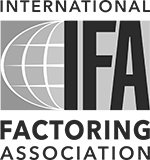Would a trade war present an opportunity?

Pundits say that investors are concerned about the possibility of a trade war. Deloitte has noted that the global economy is “decelerating sharply,” which could mean a recession is on the horizon. “Despite record low unemployment, a burgeoning trade war has had a stifling effect on business investment and trade flows, not only in the United States but also broadly around the world” the report concludes.
As you probably know, opportunities often appear alongside disruptive events. Typically, if a company thrives on disruption, it’s because its leaders have been willing to make changes in the way they operate. Here are some recommendations for both importers and exporters based on my more than 30 years of experience running businesses around the world for Fortune 500 companies.
Importers
Supply chain optimization
One of the great opportunities comes from reviewing your supply chain now, ahead of tariff policy changes. Questions to ask include the amount of money that is tied up in premanufacturing deposits made to third-party foreign suppliers and the cost of holding large inventories because of manufacturing minimums or the long shipping time to your market.
Logistics cost is often overlooked, as is the cost of visits to factories in Asia or Europe. This may be the time to explore the capability of Western Hemisphere suppliers, particularly those that are located in Mexico, Costa Rica, Colombia and Peru. They are well served by international freight forwarders. Other advantages include reduced inventory carrying costs because of reduced transit time, lower production minimums and the ability to travel in and out in a day or two.
Perhaps one of the most compelling arguments to move production to one of these countries is outlined in my earlier article, “Why company leaders need to think like outside investors.” In it, I demonstrated that return on investment is a more important measure of profitability than gross margin. A shorter supply chain supports that argument by allowing for increased inventory turns while reducing inventory carrying cost. In other words, please do not decide against optimizing your supply chain based on the cost of production per unit. Supply chain financing is available for these imports just as it is for Asian and European goods.
Exporters
If you find that tariff policy changes affect your ability to compete in a certain market, don’t despair. Here are some ideas that may be worth trying.
Outsource some production elements
Outsource some production elements to local producers. Typically, it makes sense to assign final assembly of the product, its labels and its operating manual to local suppliers to reduce the impact of tariffs and currency exchange rates. At times, this requires the cooperation of the exporter’s main manufacturing site; however, strong leaders make decisions based on the global good rather than allowing a culture of silos to prosper.
Did you ever notice how foreign manufacturers in North America are able to be competitive? Long ago foreign car manufacturers found that not only was it good PR to manufacture in North America, but it also reduced import duties and saved on logistics expenses. They shipped parts they could “nest” together, rather than incurring the cost of shipping the air inside of a bulky auto.
Optimize distribution
It is also important to lower in-country operating expenses by training locals rather than bringing in expats. Outsource any noncore operations. Refine your hiring practices by limiting the number of positions that require English speakers. Name a local distributor in place of a JV or wholly owned operation. On that note, I have seen business improvement among companies that have facilitated leveraged buyouts by key employees. If you want to learn more about international business, please take a look at my three-part series “International expansion: Is your company ready?”
I sincerely hope that this article has stimulated your interest in this timely subject. If you’d like to discuss further, please feel free to drop me a line.




